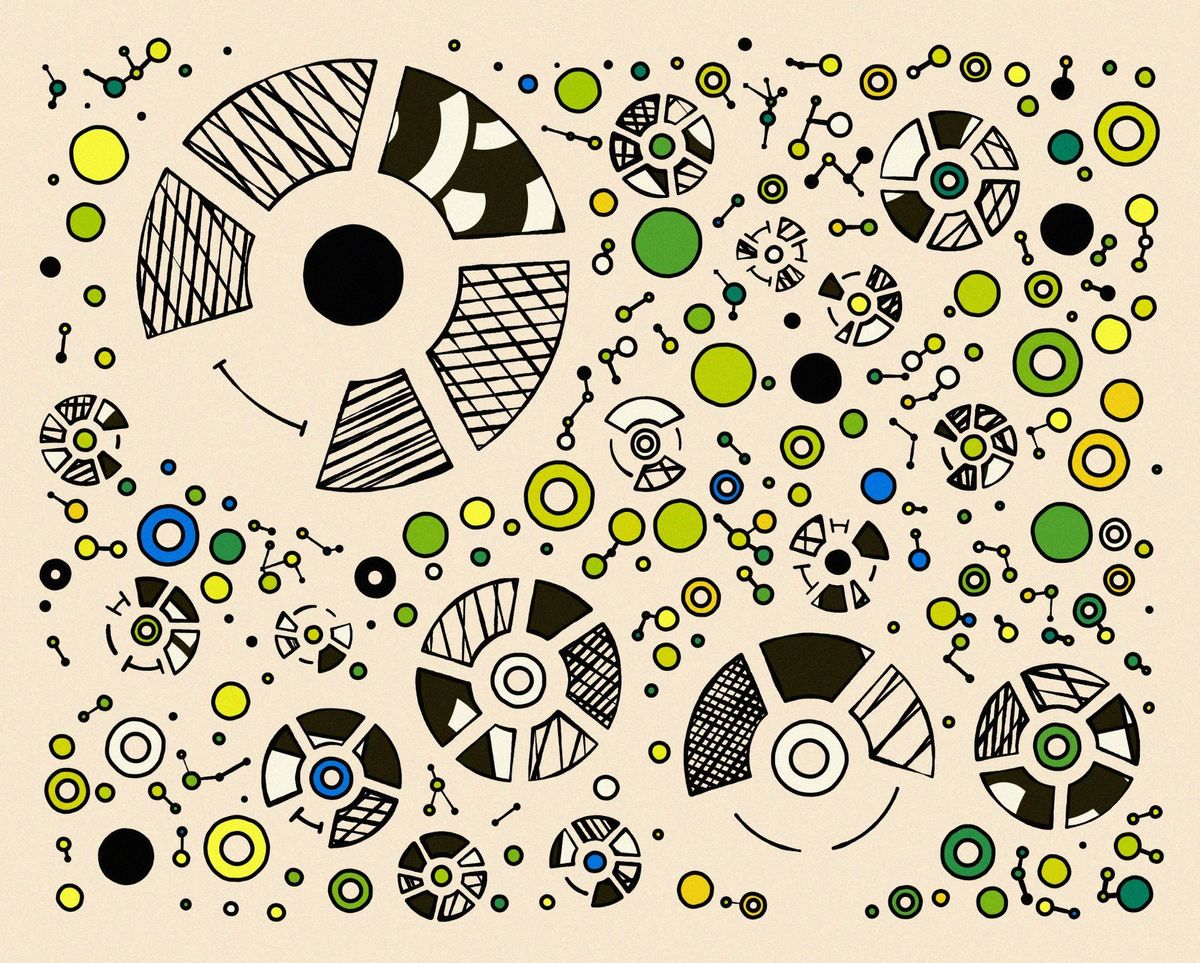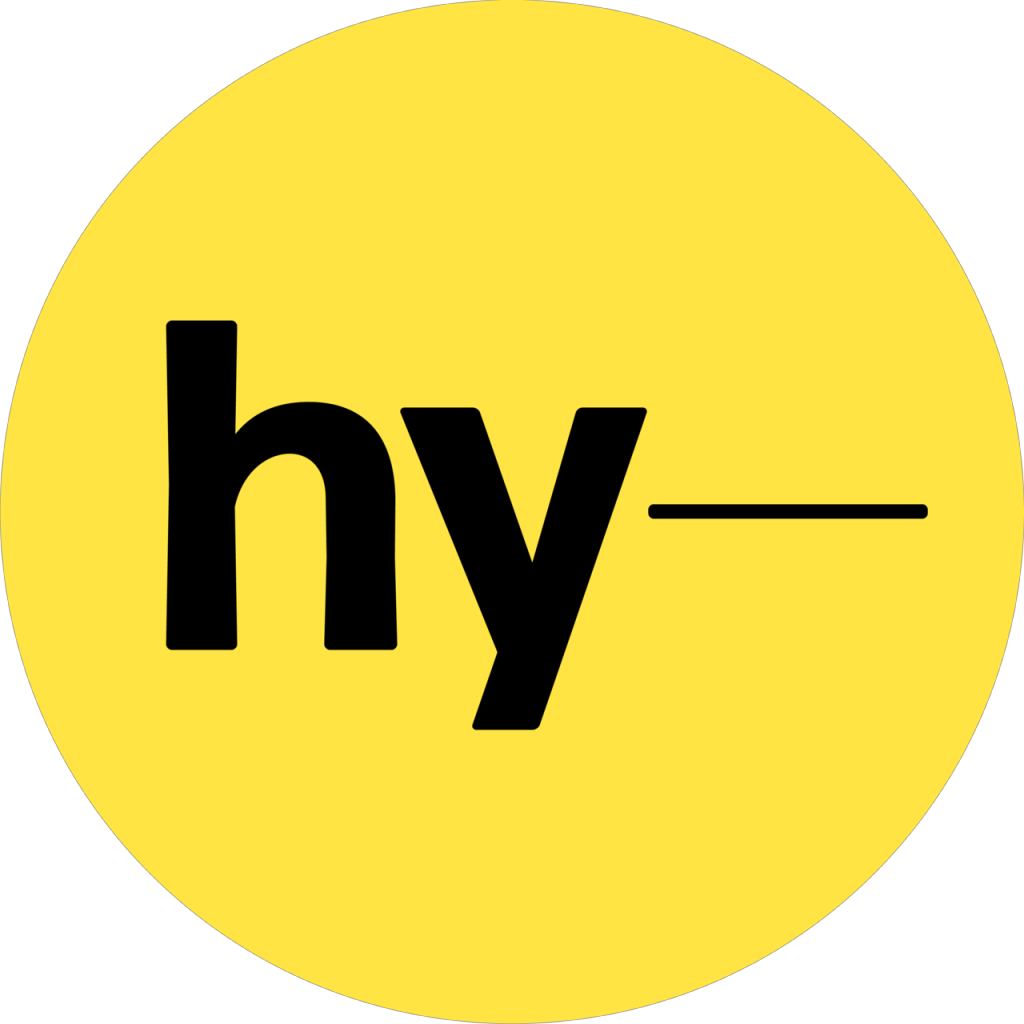Hey everyone 👋 and welcome to all new subscribers that joined since last week! Thanks for signing up and joining along for the ride!
This is the weekly Gorilla Recap - a newsletter in which I go over everything that I found noteworthy from the past week in tech, generative art, creative coding and AI.
Hope you have a good stay!
First things first - I turned 27 just yesterday! Thank you all for the warm wishes over on TwitterX, you really made my day! I'm incredibly grateful for all the lovely people I've got to interact with through creative coding, generative and the internet! ❤️ I'm hoping to make many more internet friendships in the future.
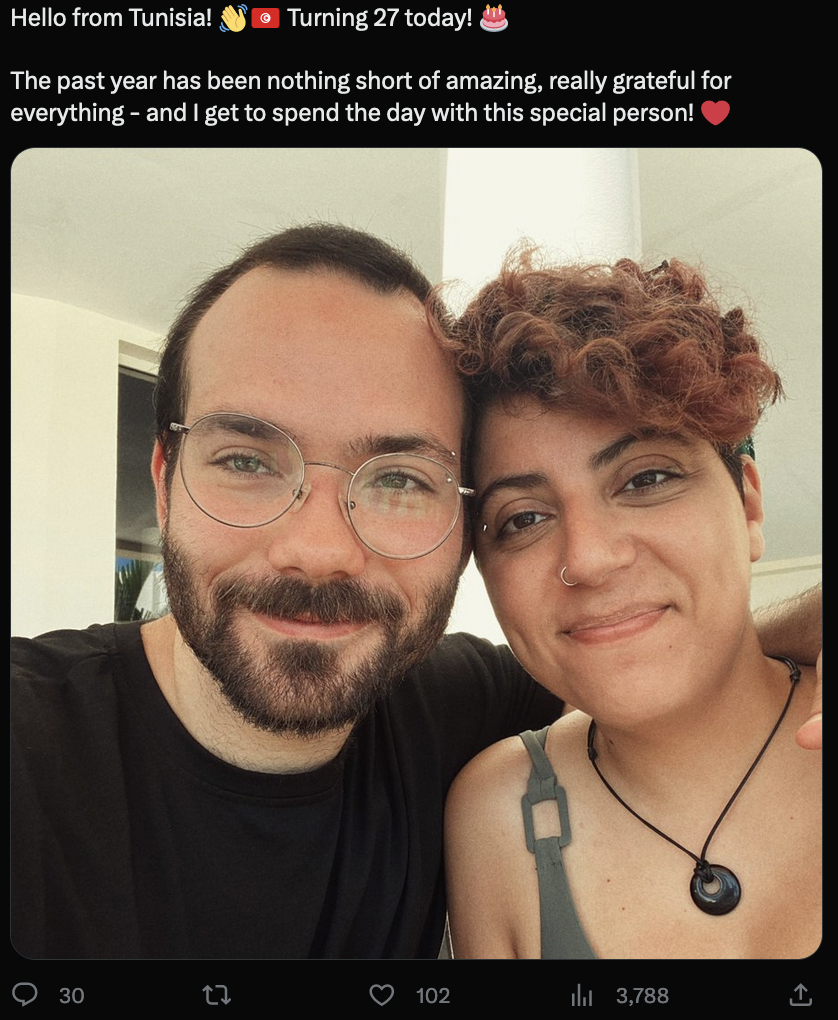
Second order of business - we're doing some minimal rebranding, the Gorilla Recap is now titled Gorilla Newsletter, as that more accurately encapsulates what it's slowly evolved into over the past weeks.
Although there's still a short segment on my own endeavors every week, the main aim is to capture important happenings from the past week in the genart space, as well as an assortment of interesting reads.
Genart Updates
The Power of Processing
On the occasion of Casey Reas' 923 Empty Rooms launching at Bright Moments in Berlin this past week; Alex Estorick from RCS had the chance to interview both Casey Reas and Lauren Lee McCarthy, the creators of Processing and p5js respectively:

The interview goes into detail on the design implications of p5js and processing, that they're not just tools to make generative visual things, but rather vessels for building a community, and at that, a community that is as inclusive as possible.

Both Processing and p5js were meant to be transformative and disruptive vessels, that sought to be boundary pushing in several ways; by making code, as a creative medium, more accessible to a larger group of people and secondly by redefining what it actually means to be a creative coder. The interview was definitely the highlight of the week for me!
Dmitri Cherniak's Lightyears
Another thing that caught my attention was the mini-documentary for Dmitri Cherniak's new project caught my attention:
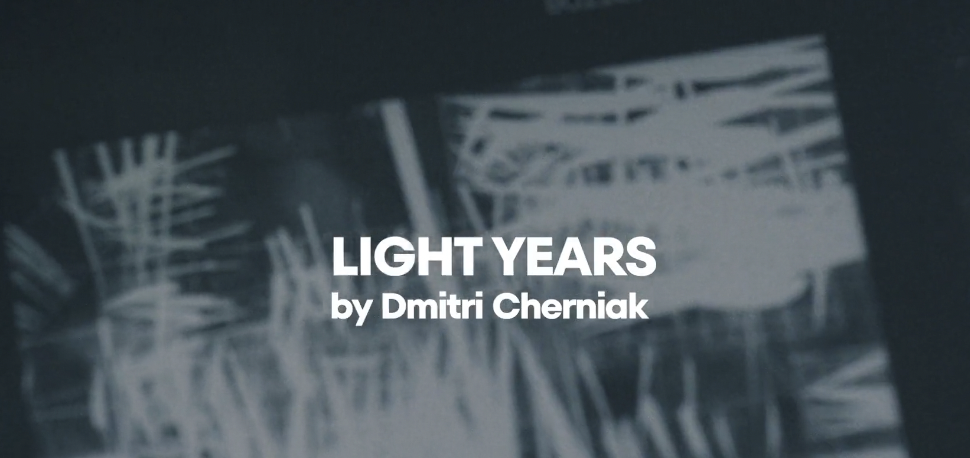
Earlier this year Dmitri Cherniak made waves, not just in the genart space, but in the entire art world when Ringers #879, aka The Goose, was auctioned off at Sotheby's for a whopping $6.2M - and he's already back with a new mesmerizing project titled Light Years.
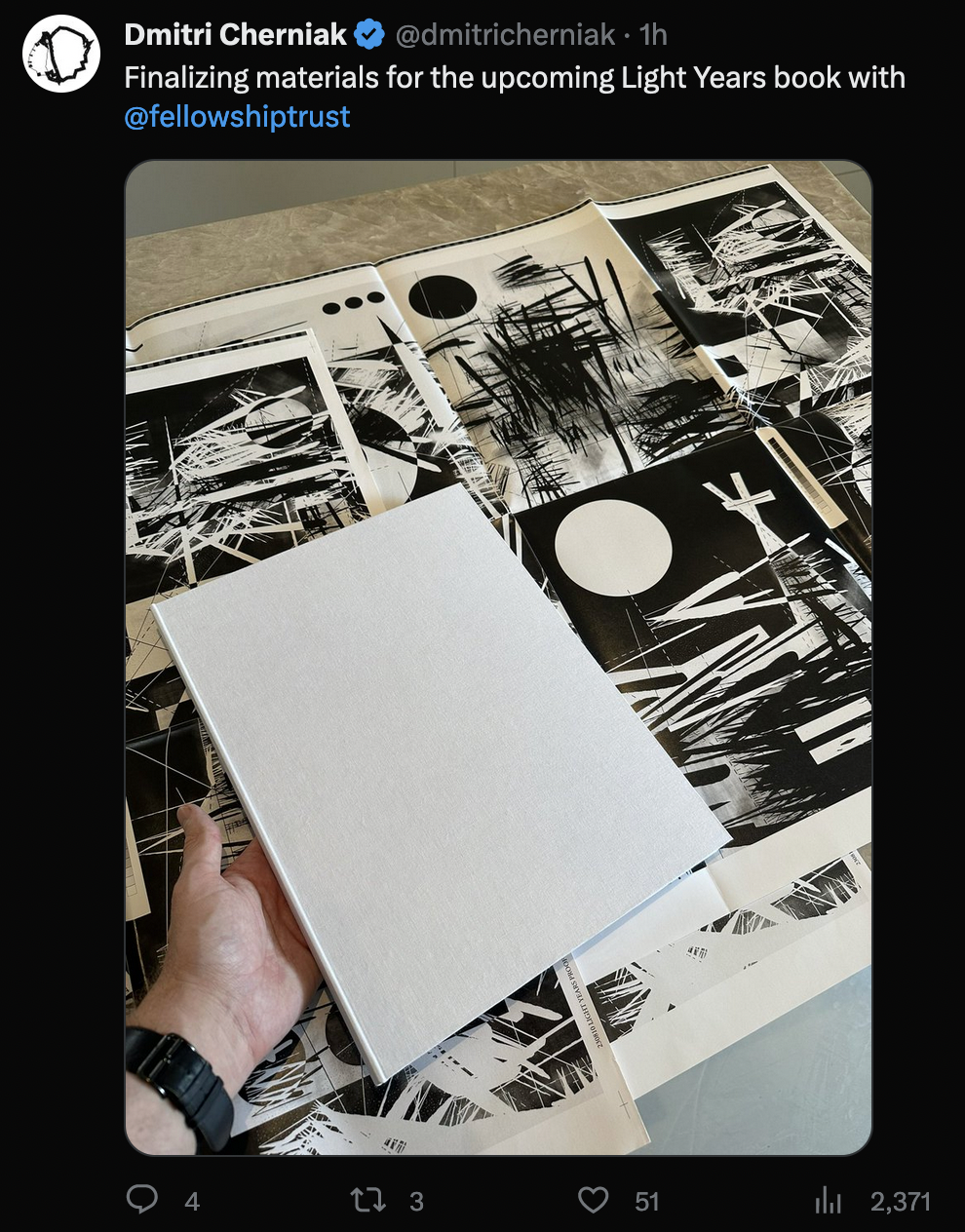
What's special about Light Years, besides the mesmerizing outputs, is that it's inspired by the great László Moholy-Nagy and at the same time backed by his estate. The documentary shows us how Dmitri is allowed direct access to the private archives of Nagy and working closely with Daniel Hug that is currently in charge of the estate. The video is really fascinating - go watch it.
We need more high quality video content like this for generative art!
Interesting Reads
This week I've come across some really nice articles that I thought were really worth sharing, covering generative art, making it as a writer on the internet and thinking out loud about improving the Twitter Algorithm 👇
On Sketching by Tyler Hobbs
With Tyler Hobbs you get some of the best pieces of advice on tackling a career as a generative artist. I was delighted to see him publish a new article this week on the topic of sketching and how ideas develop over time:

I've mentioned this a couple of times throughout various blog posts, but one of my favorite pieces of writing on generative art is Tyler Hobbs essay titled reflections on 5 years of Generative Art. He addresses a many of the hardships that come with it and how to approach it in a manner that allows to preserve some of your sanity. One invaluable piece of advice that he provides in the essay is that new works emerge by putting in the time, and that it's okay to make try out new things even if they ultimately end up as a crumpled paper in the trash bin.
In this new article, he reiterates on the concept of sketching as a practice that doesn't necessarily always need to produce masterpieces. But rather, as a selection process where you weed-out the duds from the ideas that might have potential and later on down the line grow into larger projects. He also says that it's really important to set yourself up for success with an easy to boot up template that lets you save your code and output at the same time - even though I have my own template, it could use some (many) improvements.
I also highly recommend checking out the Tweet where there's a lot of interesting comments, questions and discussions from the community:
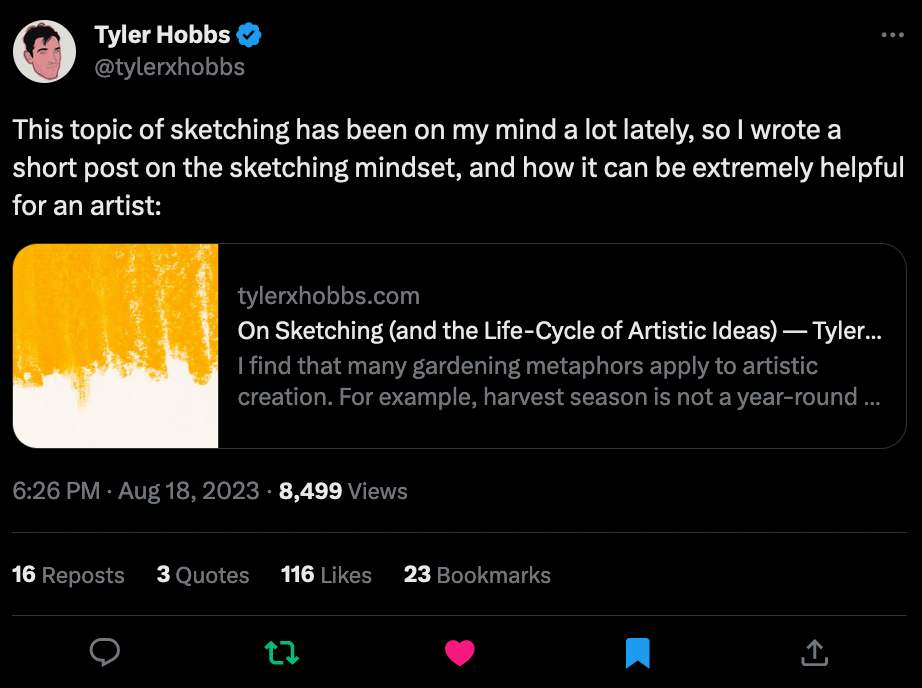
Here I'd also check out Tyler's other essays that are all wonderful pieces of writing. I'll also pitch my own essays on the topic, which can maybe give you some different perspectives:
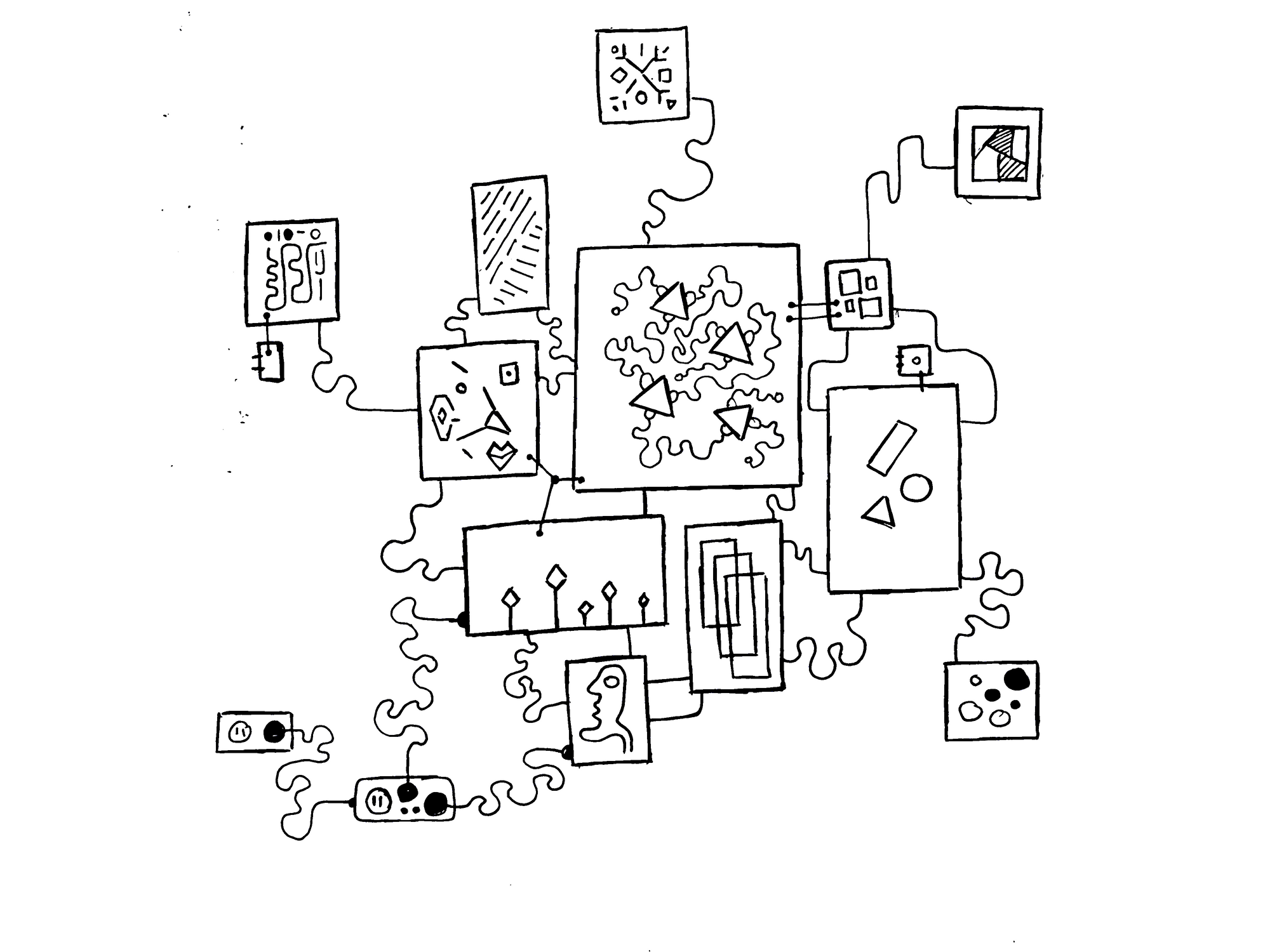
The longest piece I've written to date - it took a couple of months to organize my ideas for this one.

If you feel like a quick and inspirational bite, this one's for you.
How I make six figures on Substack by Emma Gannon
I don't generally like sharing articles with these kinds of headlines - because this newsletter isn't really about making money, as much as it is about coding and making art. However, as someone that's been doing quite a bit of writing over the past two years, I found Emma Gannon's success story incredibly inspirational.
It's not one of those 'get rich quick' kind of posts - she goes into the nitty gritty of her 14 year long career as a writer on the internet and provides a gigantic list of tips and advice:
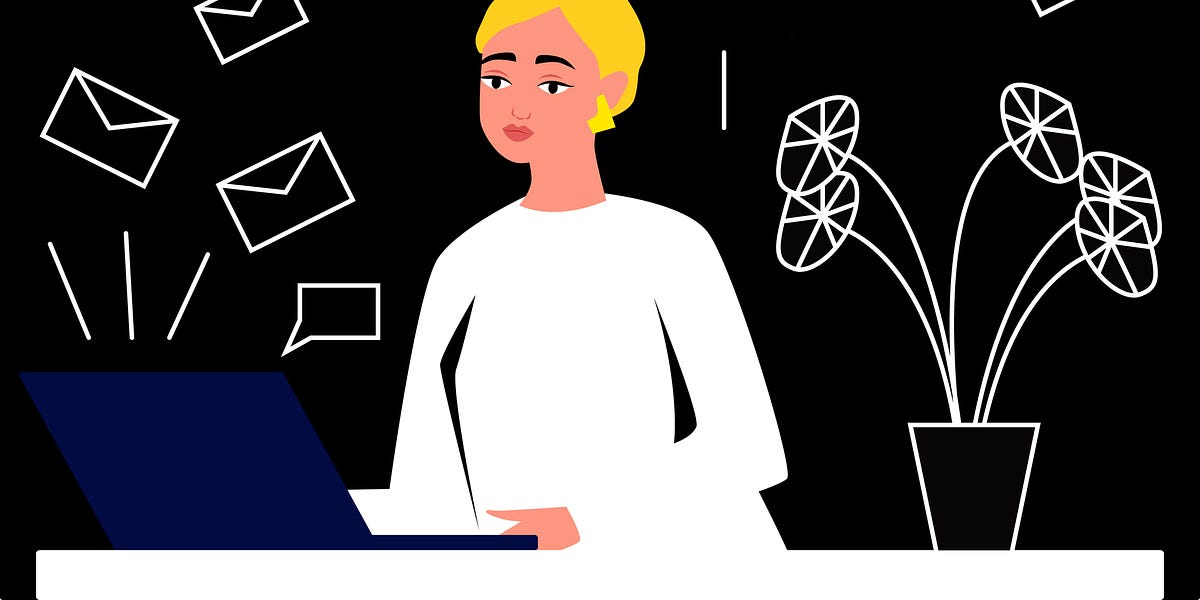
For the first point on her list she echoes the words of Bill Gates, back from an article he wrote in 96, stating that Content is King. Although the landscape has drastically changed since the early days of the internet, the phrase still rings true up until the present day - content with substance is what drives the internet forward, it's essentially an intellectual service that you provide to your audience.
A content creator provides information, knowledge, ideas and entertainment in exchange for their audience's time and money; and it's never been easier to monetize engagement in this current day and age. Gate's original article can be read here:
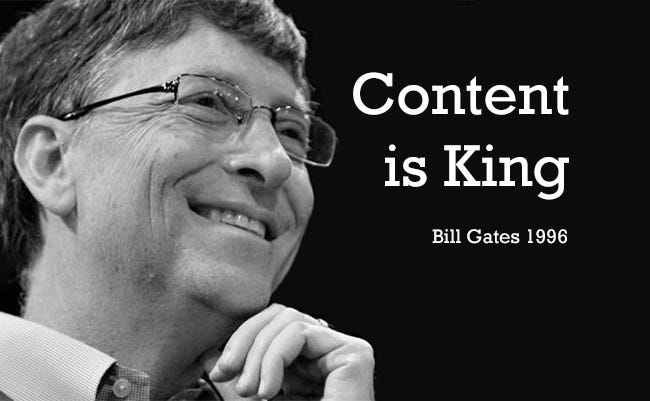
Looking at the social media space today, Gates' thinking was in many ways ahead of it's time. Without the intent to glorify the man - reading his words, it seems to me that he had a visionary understanding of the internet. Which explains the success of his endeavors.
Emma Gannon shares many more pieces of invaluable information throughout her article, hence why I highly recommend reading it if you are someone that creates content on the internet.
Making the Twitter Algorithm better
I can't tell if Elon is delusional, or brilliant.
I can't tell if him being copiously active - in a seemingly haphazard manner - on the platform that he's acquired, is daring and avant-garde, or simply plain out dumb. I believe that if you hold this much power, you should be a bit more careful with the words that you share with the rest of the world.
But maybe, actually something good can spring from this brazen approach to running his business - if he actually follows through on the promises that he's making. Since my last post The Current State of Social Media, I've spent many idle moments to think on what Human Friendly Algorithmic Dopamine mechanisms could look like, and even though I'm still very far from having a definitive idea on the subject, I believe that a big step towards that end would be transparency.
I recently came across this tweet from a twitter user I've shared on the newsletter before, when we dove into the factors that have an impact on your tweet rankings. This time they return with suggestions on improving said algorithm:
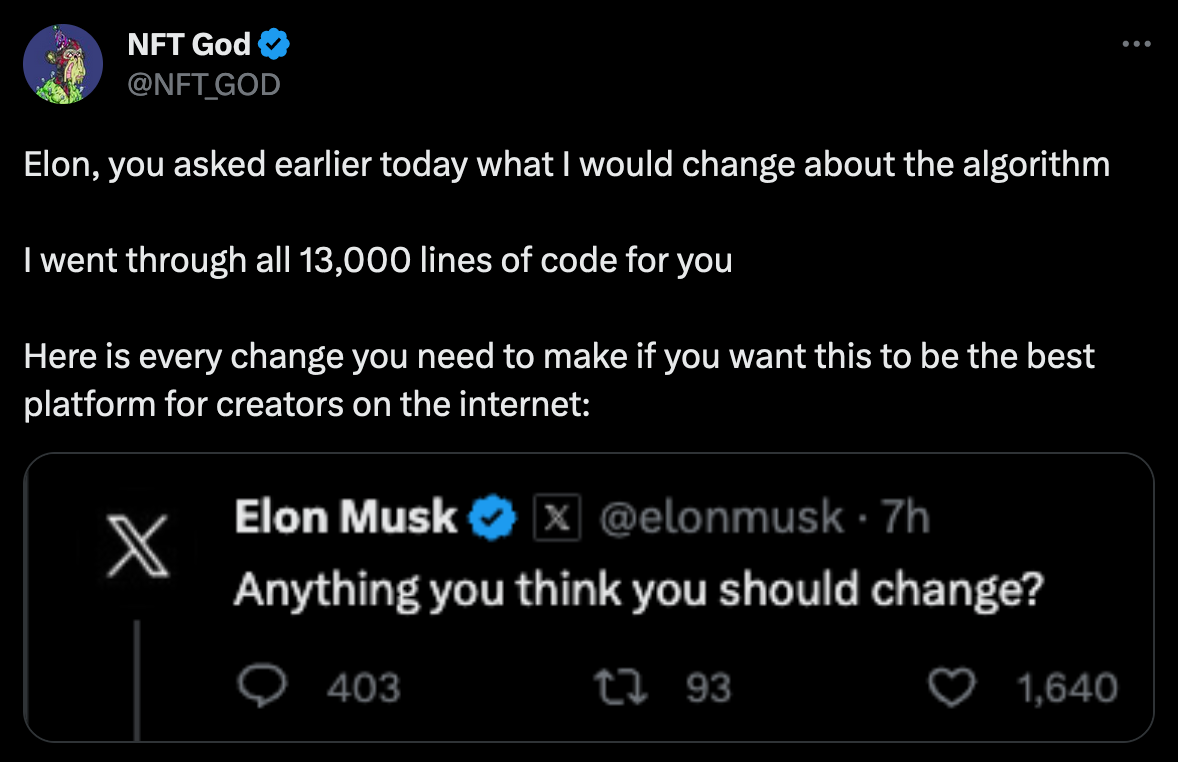
I can't vouch that all of the suggestions are actually good ones, but it's good to get the discussion started again.
If you want to learn more and you're curious about how the Twitter algorithm functions - the version that was open sourced earlier this year at least - I've written about it in this article:
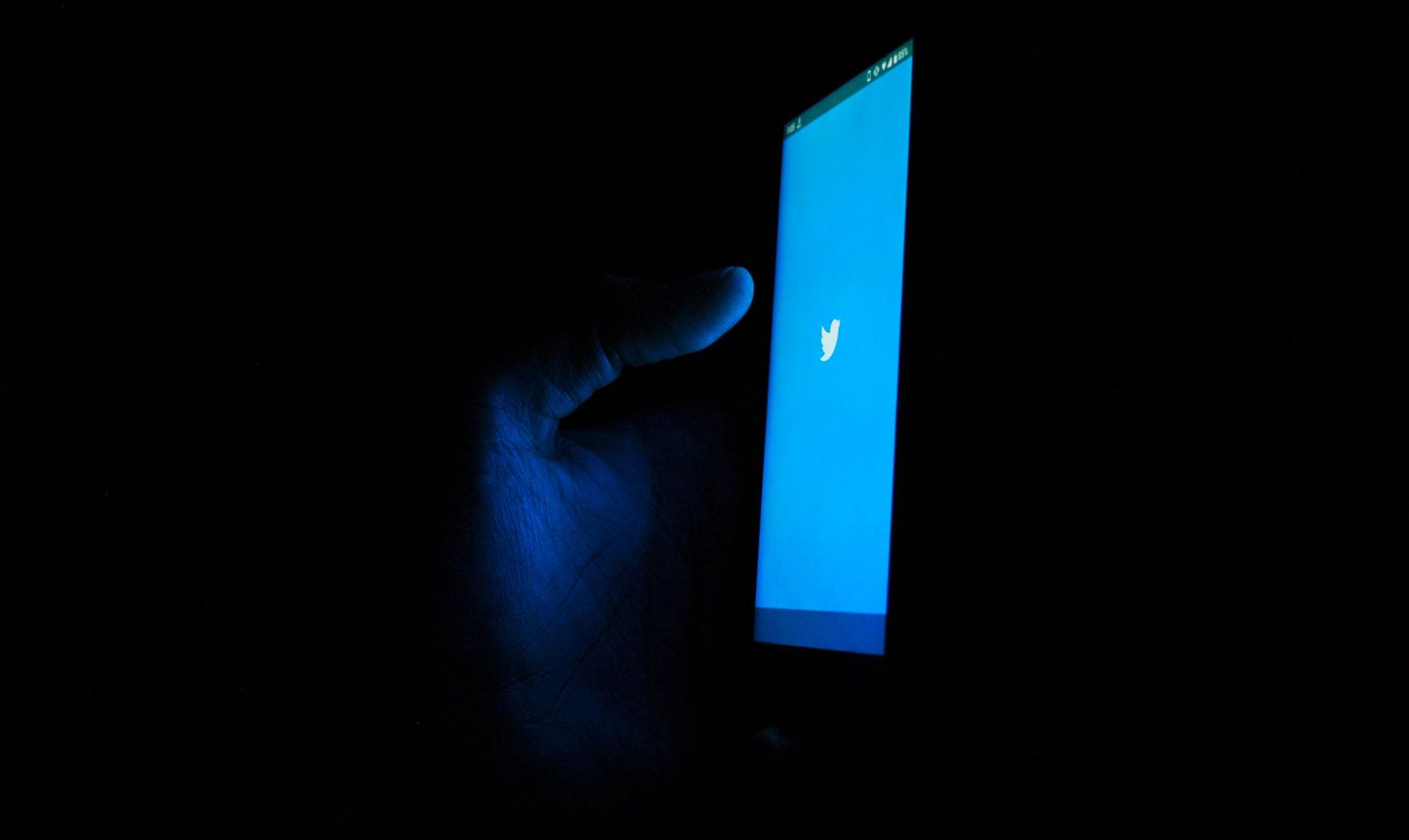
AI Corner
Scientific Discovery in the Age of Artificial Intelligence
This one's a research paper, but it's a worthwhile read. It details some of the emergent methods how AI tools are being incorporated into scientific research methods - for instance for the purpose of data analysis or automated component design:
AI systems can enable efficient, intelligent and highly autonomous experimental design and data collection, where AI systems can operate under human supervision to assess, evaluate and act on results.
The article juxtaposes the benefits of these methods with some of their deficiencies:

This can have important implications for a variety of fields, making me wonder if in the future a fully autonomous type of AI research can be made feasible. As of now, these methods still require human supervision to be of any use.
Google's Project IDX
Google announced a new online code editor that runs fully in the cloud. It's aimed specifically for the development of apps. One big draw of the editor is integrated support from AI tools. I have used ChatGPT for debugging purposes and for quickly brainstorming ideas; however I have yet to try tools like google co-pilot:
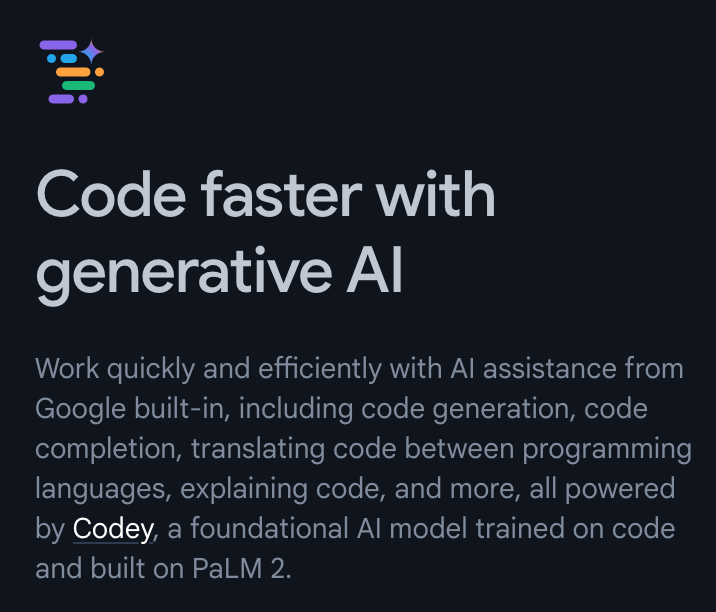
I really want to try out code generation/completion plugins very soon. I think it could be a different creative coding avenue to explore, where it gets easier to break writer's block while exploring ideas.
You can sign up for the IDX waitlist here:
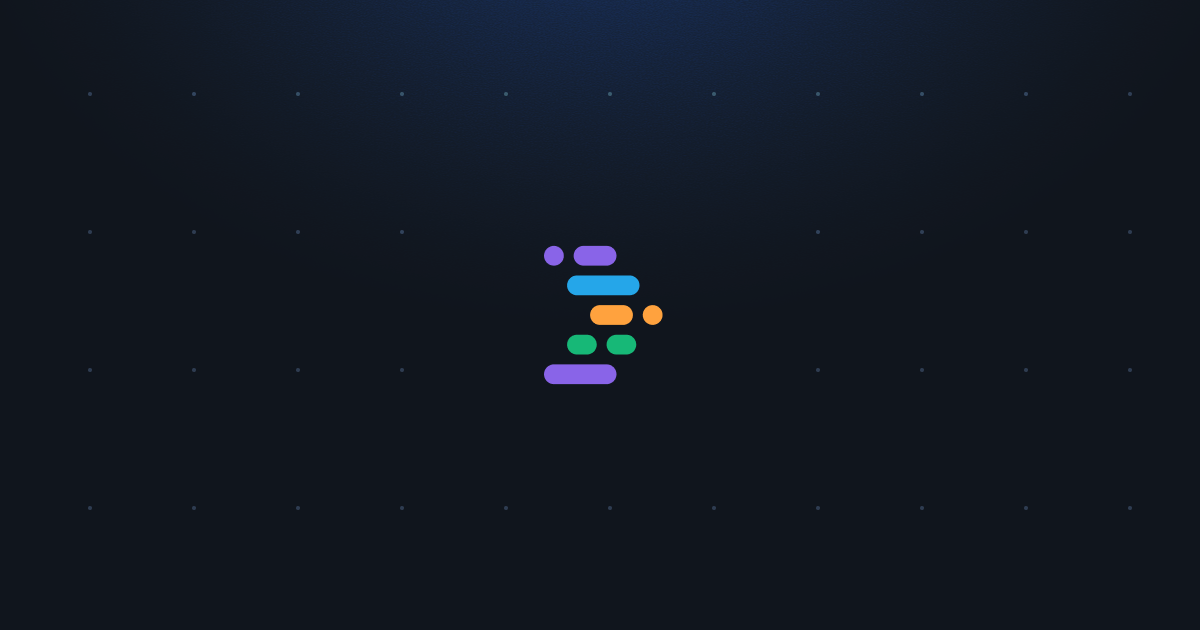
I don't know how long it takes to get an invite however 🤞
Tip of the Week
Besides posting awesome works of generative art, Yazid also provides much needed perspective. Genart is already a difficult endeavor in and of itself, having to learn the mechanics of social media while constantly marketing yourself in some manner just makes things so much harder.
One reply to his Tweet that stood out was by Rik Oostenbroek:
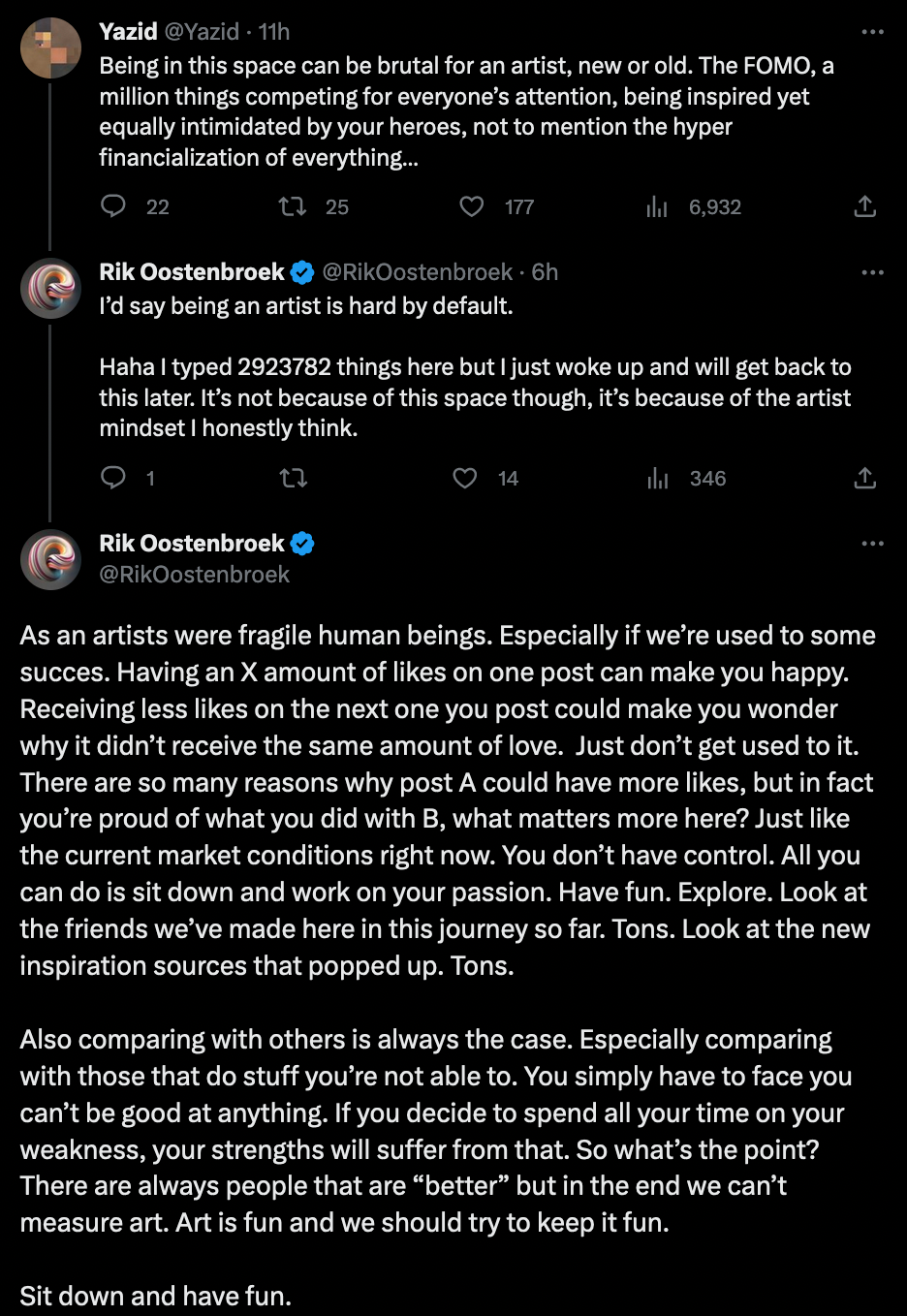
Do not let your emotional well-being be affected by meaningless algorithmic metrics. These things are at best random. I have definitely experienced self-doubt from not receiving the reaction that I was expecting on work that I poured my heart into. Ultimately your work speaks for itself.
Sit down and have fun. That's all there is to it.
Music for Coding
You might know Jake Bowen as one Periphery's guitarists. When he's not shredding the guitar he also makes electronic music. His album Isometric was one of the first instrumental electronic pieces that I fell in love with, and it just resonates with me so much more all these years down the line:
And that's it from me this week again, hope this caught you up a little bit with the events in the world of tech, AI and generative art in the past week!
If you enjoyed it, consider sharing it with followers, friends and family on your socials, that share interest in this nerdy stuff. Otherwise, consider signing up to get notified whenever there's new content on the blog. Cheers and happy sketching ~ Gorilla Sun 🌸
